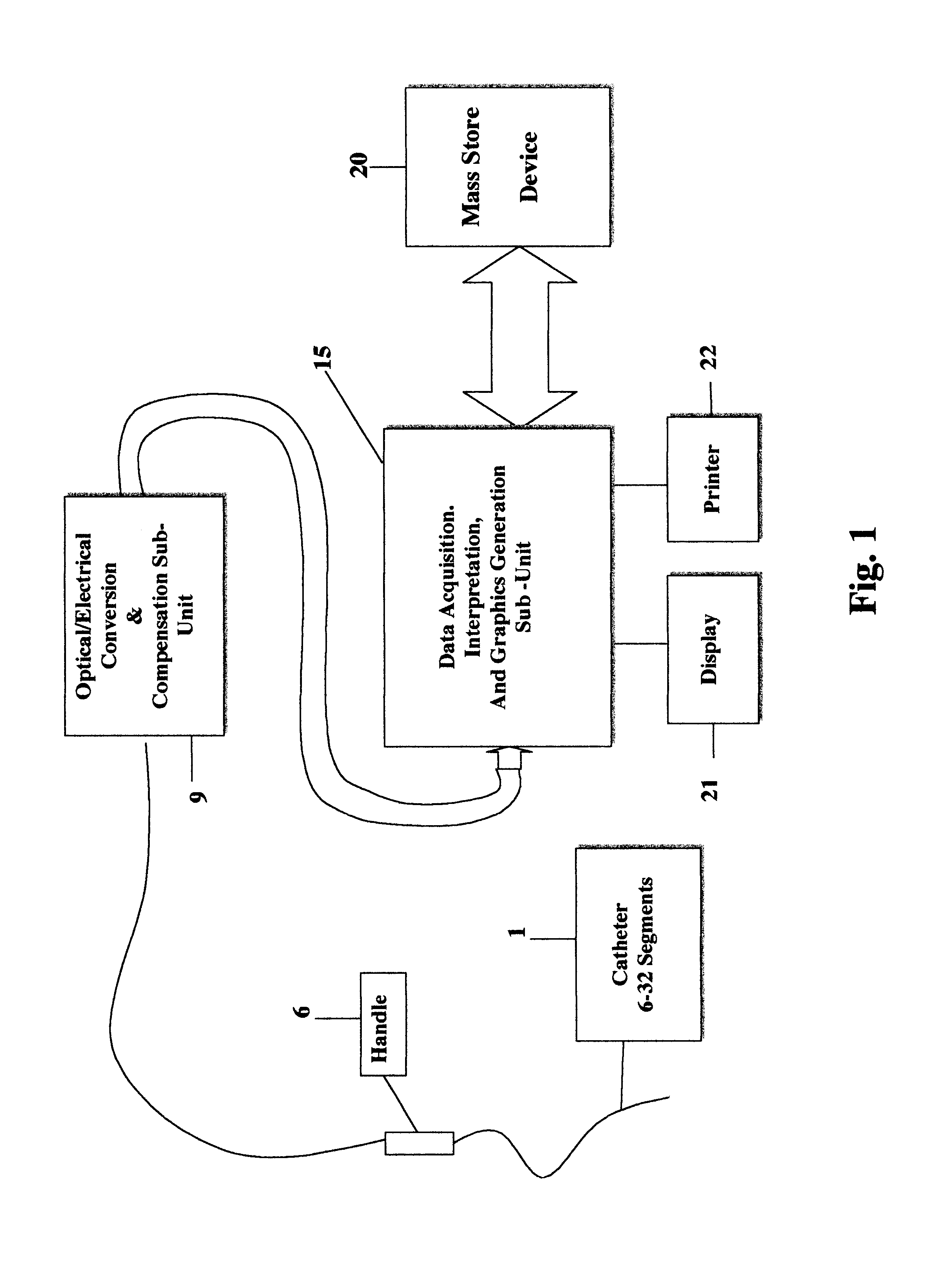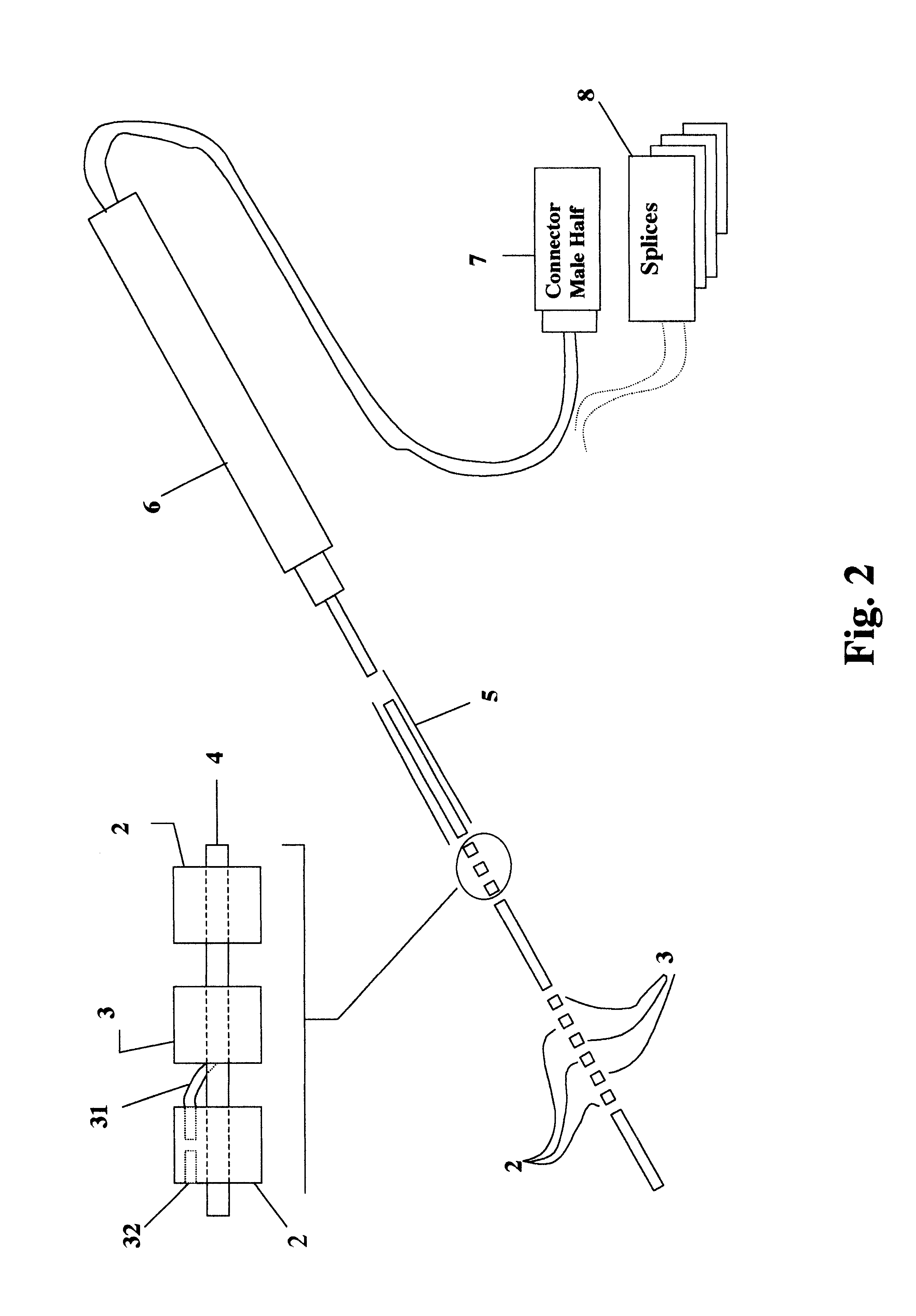Motility analysis, display, and interpretation system
a technology of display and interpretation system, applied in the field of medical diagnostic systems and methods, can solve the problems of large amount of health care resources consumed in diagnosis and management, large amount of health care resources, and inability to provide qualitative and often crude information
- Summary
- Abstract
- Description
- Claims
- Application Information
AI Technical Summary
Benefits of technology
Problems solved by technology
Method used
Image
Examples
Embodiment Construction
should be read together with the accompanying drawings, wherein:
FIG. 1 is an overall schematic depicting the system according to the present invention;
FIG. 2 is a schematic depicting the catheter sub-unit of the system according to the present invention;
FIG. 3 is a schematic depicting the signal-conditioning sub-unit of the system according to the present invention;
FIG. 4 is a schematic depicting the data acquisition, storage, graphics display and interpretation module of the system according to the present invention; and
FIG. 5 is a typical display graphic obtained by the system according to the present invention.
Referring now to the drawings, an overall depiction of a preferred embodiment, consisting of sub-units and modules, is represented in FIG. 1, which shows the spatial array of opto-mechanical transducer elements, 1; the electro-optical analog conversion and optical power compensation sub-unit, 9; the multiple channel data acquisition, data scaling, and engineering unit conve...
PUM
 Login to View More
Login to View More Abstract
Description
Claims
Application Information
 Login to View More
Login to View More - R&D
- Intellectual Property
- Life Sciences
- Materials
- Tech Scout
- Unparalleled Data Quality
- Higher Quality Content
- 60% Fewer Hallucinations
Browse by: Latest US Patents, China's latest patents, Technical Efficacy Thesaurus, Application Domain, Technology Topic, Popular Technical Reports.
© 2025 PatSnap. All rights reserved.Legal|Privacy policy|Modern Slavery Act Transparency Statement|Sitemap|About US| Contact US: help@patsnap.com



